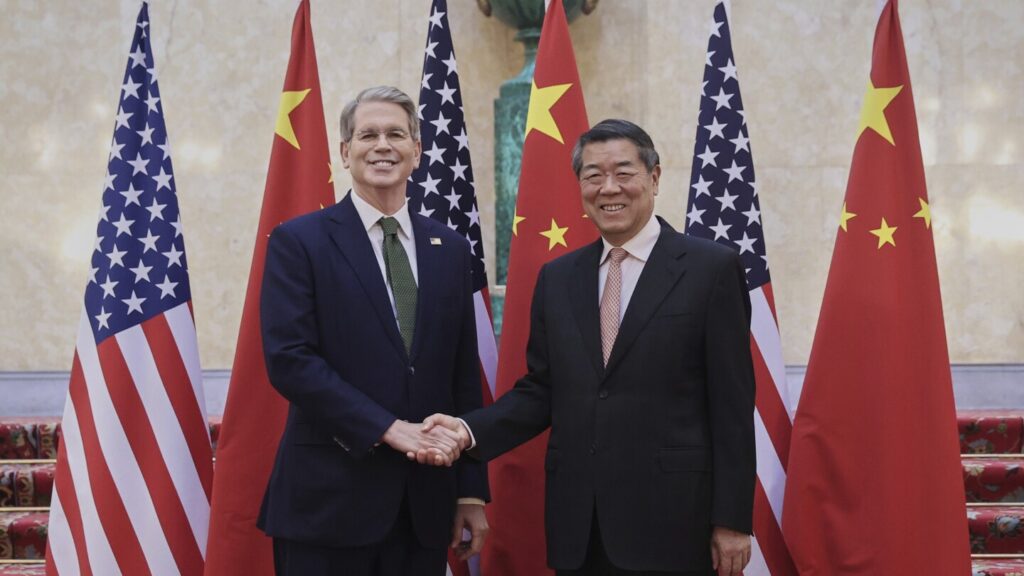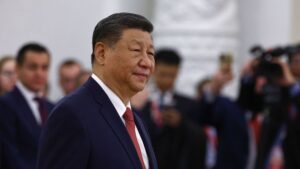
WASHINGTON – The United States and China have once again reached a trade agreement aimed at deescalating tensions between the world’s two largest economies. However, the latest pact leaves several critical issues unresolved, casting doubt on its long-term impact.
Immediate Impact
President Donald Trump announced late Thursday that a deal with China had been signed, an assertion later confirmed by China’s Commerce Ministry on Friday. Yet, both parties have provided scant details about the agreement, perpetuating a hallmark of Trump’s trade policy characterized by sudden shifts and ambiguity.
Since assuming office, Trump has sought to overhaul a global trading system he deems unfair to the U.S. and its workforce. His ongoing trade battle with China has underscored the economic pain both nations can inflict on each other.
Key Details Emerge
U.S. Treasury Secretary Scott Bessent revealed that China has agreed to facilitate American firms’ access to Chinese magnets and rare earth minerals, essential for manufacturing and microchip production. This comes after Beijing had previously slowed exports of these materials amid the trade dispute.
“China will, in accordance with the law, review and approve eligible export applications for controlled items. In turn, the United States will lift a series of restrictive measures it had imposed on China,” stated the Chinese Commerce Ministry.
However, the statement did not clarify whether the U.S. would ease its controls on advanced technology exports to China, a significant Chinese grievance.
Industry Response
Experts have expressed skepticism regarding the substance of the agreement. Jeff Moon, a former trade official in the Obama administration, pointed out the lack of disclosed details, suggesting the deal may not be as substantive as implied.
“Silence regarding the terms suggests that there is less substance to the deal than the Trump Administration implies,” said Moon, who also served as a diplomat in China.
Background Context
This agreement builds on a “framework” announced by Trump on June 11 after high-level talks in London, where China agreed to ease restrictions on rare earths, and the U.S. agreed to stop revoking visas for Chinese students. Previous negotiations in Geneva led to a reduction of steep tariffs, which had reached as high as 145% against China and 125% against the U.S.
What Comes Next
The agreement represents an effort to reduce tensions, though analysts remain cautious about its potential to resolve deeper issues. Eswar Prasad, a trade policy professor at Cornell University, noted the ongoing challenges.
“This is a positive step but a far cry from signaling prospects of a substantial de-escalation of tariffs and other trade hostilities,” Prasad commented.
Trump’s trade war with China began in his first term, focusing on China’s attempts to surpass U.S. technological supremacy. The U.S. has accused China of unfairly subsidizing tech companies and forcing technology transfers.
Regional Implications
The trade agreement’s impact on other U.S. trading partners remains uncertain. Trump has imposed a “baseline” 10% tariff on imports from all countries and announced higher tariffs on nations with trade deficits with the U.S. However, these measures have been temporarily suspended to allow for negotiations.
On Friday, Bessent mentioned that talks with key trading partners could extend beyond the July 8 deadline, potentially wrapping up by Labor Day.
Timeline of Events
- June 11: Trump announces framework agreement in London.
- July 8: Deadline for tariff negotiations with key partners.
- Sept. 1: Potential conclusion of talks with major trading partners.
Expert Analysis
Scott Kennedy from the Center for Strategic and International Studies highlighted that the current agreement does not address the U.S.’s concerns about China’s trade practices or its trade surplus.
“If the two sides can implement these elements of the ceasefire, then they could begin negotiations on issues which generated the initial escalation in tensions in the first place,” Kennedy stated.
As the situation evolves, the focus remains on how effectively the U.S. and China can implement the agreement and whether it will lead to more comprehensive negotiations addressing the core issues of their trade relationship.







